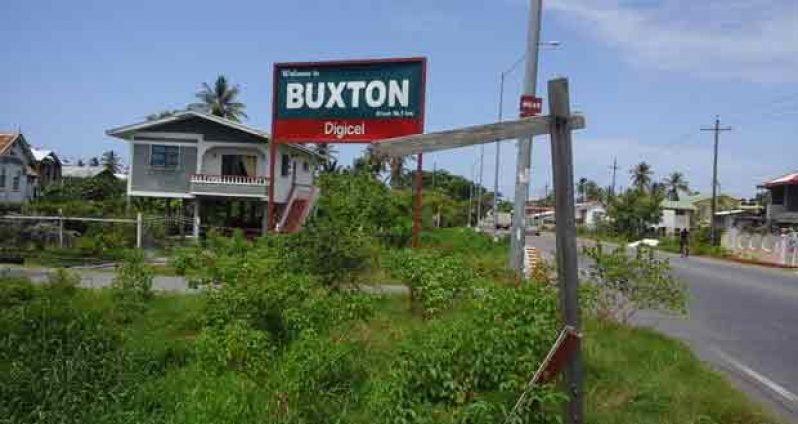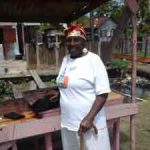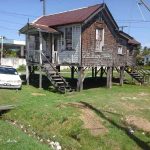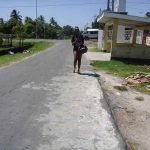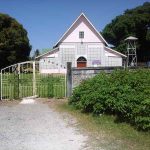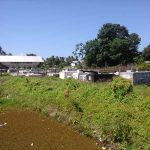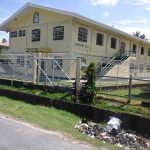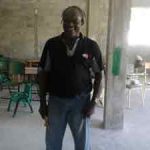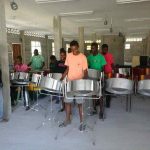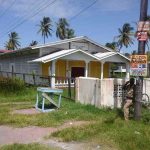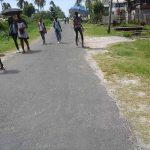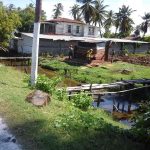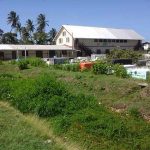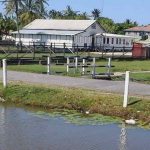To be honest with you folks, I was heading for a village I was very curious about, but I was doing so with mixed feelings.
You see, the moment I mentioned that this village was next on my Village Focus list of places, some of my colleagues balked with fear, and told unpleasant tales with acute warnings to be extremely careful.
But knowing me, always loving a challenge, I set aside my misgivings and began my short journey to my destination. Readers, let me warn you to never listen to hearsay evidence; you must always ensure that you see something for yourself before you end up spreading wrong news.
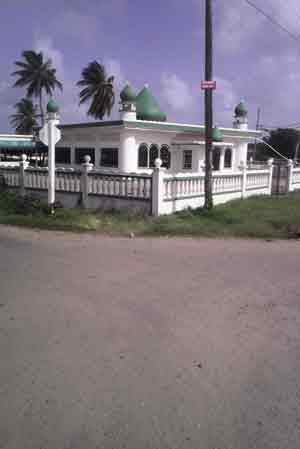
When I landed in Buxton (East Coast Demerara) butterflies were fluttering in my stomach, but I was received with such warmth by the people that I immediately quelled my fears and crushed all the rubbish I was told under foot.
All I met there were welcoming smiles, cooperation from residents, and a warmth that left me perplexed with its intensity.
There were no rude remarks, hostility or outright rage, as was predicted by my very silly colleagues. As a matter of fact, after my interviews I sat down at the Company Road junction with some ‘Rastafarian Brothers’ and enjoyed sliced pineapple and cool water coconuts as we chatted about their plans for the upcoming Emancipation celebrations.
I also received several invitations from a few ‘small promoters’ to attend a series of concept parties and live shows they were planning for the next three months to come.
And I left that location with visions of the endearing smiles of my newfound elderly friend, 78-year-old Yvonne Britton, who hugged me dearly as she joyously unfurled tales of Buxton in years gone by.
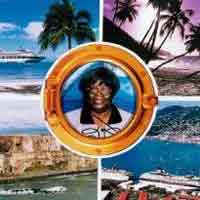
History
Heralded as Guyana’s premier village, Buxton is a community of two adjoining villages in Buxton, in the western block, and Friendship in the east. The natives and their descendants are called Buxtonians.
The village was purchased (1840-1841) by African-descended labourers who were emancipated from slavery on August 1, 1838. It was developed into the largest and one of the most efficient local authorities in the country. It lies within Guyana’s Region 4 (Demerara/Mahaica), approximately 12 miles (19 kilometres) east of the capital city of Georgetown, and it is part of the Buxton-Foulis Neighbourhood Democratic Council (NDC).
According to the 2002 National Population Census Report, the total number of inhabitants was 5,900, with 3,490 persons residing inside Buxton and 2,410 in Friendship. A conservative estimate of 2,000 Buxton natives and their descendants can also be found in the expanded suburbs of South Annandale, Vigilance, Strathspey, Bladen Hall and Melanie Damishana. Thousands more reside overseas.
Today, however, the population has increased and the village has quite youthful inhabitants. The community shares a proud history of scholastic excellence through its many illustrious sons and daughters, some of whom were beneficiaries of the Buxton scholarship, and who went on to serve in prestigious positions around the world. Most notable among them was Winifred Thierens-Gaskin, a remarkable women’s rights advocate, educator, politician, government minister, and diplomat. This scholarship was enacted into law by the then British Guiana Parliament on July 7, 1923 to provide academic scholarships for the children of Buxton-Friendship.
Buxton was founded in 1840 by a group of freed Afro-Guyanese who purchased the former Plantation Orange Nassau. Friendship, its sister village, was founded in 1841 after the purchase of Plantation Friendship. The two were later joined to form the village of Buxton-Friendship, which is commonly called Buxton.
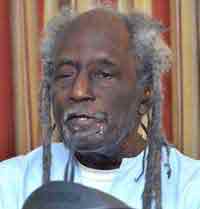
Buxton was founded when a group of between 128 and 132 former slaves from Annandale purchased the 580-acre plantation for 50,000 dollars. The 700-acre Friendship plantation was purchased by 168 former slaves for 80,000 dollars. Buxton, Friendship, Victoria along with other Guyanese villages, were all collectively purchased by groups of former slaves after emancipation was enacted in 1838.
The Buxton-Friendship Local Authority was established to interact with plantation owners. In addition to building roads, trenches and other similar infrastructure, they also formed an elected village council. In 1856, the British Guiana Legislature gave the government the right to enact improvement taxes on the properties of the villagers; this led to a stalemate between the government and the purchasers of Buxton.
In 1862, the Governor of British Guiana confiscated the property of James Jupiter, Blucher Dorsett, Hector John, Webster Ogle, Chance Bacchus and James Rodney (Snr), leading to riots. After the governor refused to hear the complaints of the delegations from Buxton, six village leaders set sail for England to air their grievances to the Queen. After arriving in Barbados, the Barbadian Governor met with the delegation and advised his counterpart to absolve their properties of tax duties. This betrayal upset the other villagers, and threatened the wellbeing of the members of the delegation, who claimed they were not aware of the contents of the letter.
In another effort to settle this dispute, some villagers decided to block the train carrying the Governor, and forced him to listen to their grievances. With his train surrounded by angry villagers, the Governor promised that Buxtonians would be exempted from those levies.
During the pre-Independence period, Buxton-Friendship was the site of some ethnic violence, including two murders. It is also said that events there triggered the Wismar Massacre, thus causing most of the East Indian population to move to the nearby villages of Annandale and Lusignan. During the 2000s, Buxton was the supposed base of the criminal gangs blamed for the increase in murders and other violent crimes in Guyana.
Today things in the village are vastly different, and housewife Stephanie Stewart was ready to shed light on this evolvement.
“Let’s get serious here… And I hope I am not chastised for being honest. Buxtonians are really good people. It is just a few rotten eggs that came amongst us and stirred up havoc in the village, even driving fear into villagers. But I am glad today that phase is over and villagers have managed to settle down to a life that is far more becoming than the chaotic happenings created here in times gone by by negative forces, many of whom were not even born Buxtonians.
“Today our village has taken on a ‘positive calm’ and our youths are more involved in ventures that can benefit them and the village in the long run,” she proudly declared.
Employment
Most of the employed villagers work in the government sector — Education, Healthcare, Law Enforcement and the Public Service. Several others are employed by the Buxton-Foulis Neighbourhood Democratic Council (NDC), whose administrative office is situated in the village. A small few engage in building construction, furniture manufacturing, trade services, bus transport services, food vending, beauty and hairdressing services, bars and small shops; while others employ themselves in farming livestock, sugar cane and cash crops.
The community houses a government-run Post Office. Other significant businesses in the village are a gas station and a wholesale beverage distributorship.
The Buxton Health Centre is a primary health care facility that provides free medical and dental services to residents. The government-run facility is staffed by a physician, pharmacist, nurses, assistants and other support personnel. Private services and routine care can also be obtained from practitioners operating in nearby areas. However, the top flat of this facility is in dire need of repairs, and villagers are calling upon the relevant authorities to execute same.
Sports and Entertainment
Cricket, football, track & field, circle tennis, cycling, volley ball and basketball are some of the organised team sports in the community. There are two football (soccer) clubs: Buxton United Sports Club and Buxton All Stars Club. Buxton Cricket Club promotes and organises cricket.
The churches in the community also have wings of spiritual, social, cultural and leadership groups.
The First of August Movement (FAM) is the group which spearheads activities for the Emancipation Day celebrations every year. The event is marked with a campfire, cultural show, drum festival, libation, dedication to the ancestors, and a feast of ethnic foods.
The Buxton-Friendship Restoration Committee, supported by the US-based Buxton-Friendship Heritage Group, leads off the annual Emancipation commemoration with a week of activities that include church service; art, craft & book exhibitions; documentary film shows; a cultural show and fair; queen pageant & gala affair; senior citizens’ party; culture camp for youths; excursion tours to historic sites and museums for youths; and lectures and discussions on the history, struggles and accomplishments of our ancestors.
Other major celebrations in the village are organised for the Mashramani, Easter and Christmas holidays. “Mash” is marked with magnificent road tramps, costume parades and Soca parties. The Easter holidays bring home a swell of overseas-based villagers and grand attendance at church services. The children enjoy kite-flying, while adults find entertainment at parties and excursions. Christmas continues to be the most extravagant celebration in the village, with indulgence in new home furnishings, lavish menus, gifts, new and fancy attire, and parties.
Buxton is the original home of the popular Buxton Spice mango. This distinctly sweet, fleshy, yellowish-red fruit, when ripe, grows abundantly in the fertile backlands of the village. The farms also produce an abundance of coconuts, sugar cane and other fruits.
That aside, the most anticipated entertainment feature in the village is the Buxton/Foulis Road Tramp and Live Show’ that was founded by popular East Coast Demerara Promoter Ean ‘Father Moey’ Havercone.
This event sees large scores of villagers and citizens from outside locations converging in a wild revelling melee as they gyrate and tramp through several East Coast villages before returning to the Buxton Community Centre Ground, where they are treated to live presentations from foreign artistes and some of Guyana’s most rated entertainers.
In the olden days there were many sports enthusiasts in Buxton, and Magistrate Veerasammy, at the time a resident of Friendship, played a major role in the rebuilding of sports facilities, and helped to raise the standard of cricket in the village. He was a cricket coach who gave his talents freely. There was also the war time Casual Cricket Club with old greats like Oscar Spenser, Martin Stephenson, Clayton Castello and Speco Bacchus, all of Friendship. However, it was goldsmith Fred Roopchand who was the leading pioneer of cricket in the village. He organised the new Congress Cricket Club and coached people such as Charles Booker and Martin Stephenson, who went on to play in national first class competitions.
The Rev. Aubrey Bowen, an Indian Lutheran Minister, first brought volley ball to Friendship/Buxton. He and his family, including his children Indy and Rudy, lived at the Lutheran Manse now occupied by the Jameses at Friendship Middle Walk Front. The Bowens could also have been the pioneers of table tennis in Friendship.
The Methodist School also had a table tennis table that used to be leaned against the wall to the left as you enter the building. It is said that that table dated back to around 1954.
Indians, who started arriving in the village in the 1890s, emulated the Africans in striving for education and social betterment in the country. By the 1950s, they were scattered throughout the village with concentrated enclaves in the area along the seashore, referred to as Buxton Front, where there were some of the most renowned sea fishermen in the country. On both sides of the railway embankment around the railway station they worked as pawnbrokers and jewellers, and operated clothing and hardware stores; and in the area along Brush Dam they raised cattle and grew rice in adjoining estate lands.
Most, if not all of them, adhered to Indian cultural traditions, and Buxton could boast of having some of the most educated and finest Indian musicians and singers of Chowtaals, Ramayan and Bhajans.
Buxton as of yesteryear
Today Buxton has shed much of its colonial days’ features and is rapidly becoming a location that accommodates impressive houses, many small shops, and vibrant businesses.
But before this appealing evolvement had occurred, many locations of the village were submerged in the ancient tentacles of time, with villagers existing quite contentedly with almost no sophisticated means of living.
Reminiscing on the good old days was 78-year-old Yvonne Britton, a merry old soul with still girlish giggles tumbling from her sun parched lips. With a special gleeful twinkle in her very alert eyes, she launched into a tale that seemed to take her back to girlhood, as was evident in the dreamy glow on slightly supple cheeks.
“In my time, there were not so many shops and businesses like today, save for the very small ones where we could get fresh mauby, cassava pone and black pudding for little or nothing. Bai, in dem days things was really cheap. We nevah had electricity like today, and I am thankful Govament give we street light and things, but de cast-ah-living still high…. We bin had tuh use black wata from dem trenches, but we didn’t kay… Me mumma use tuh bile it before we drink it, and oh me laddie hoy… It use tuh taste real terrible.
“In dem days it was battle lamp fuh everybody, and if yuh see how dem lamp babbing pon dem dam like Oligue late at nights when dem farmah comin home from de backdam… We had ah couple ‘chuku chuku’ ole cars, but everybody use to use the train fuh move about. I remembah de days how dem people use tuh come out from dem ships and use small boats fuh guh in de backdam fuh fetch out mangoes, coconut and ground provishan.
“In dem days de youths de respect the eldahs and was well mannerly. But today dem like pigs in de village and always ready fuh bite aff we head if we try fuh correct dem…. Hmmmmm… Dem days was really nice days…,” she reminisced.
“I remember Saturdays and Mondays as prime market days at the municipal market next to the Post Office, just off Company Road, a stone’s throw from the railway station. The interaction and relationships between Africans and Indians were based on mutual respect and trust, befitting two peoples who depended on the fruits of each other’s labour.
“East Indians from the estate areas of Lusignan Pasture and Annandale Sand Reef to the west, and Vigilance to the east would bring their produce of garden vegetables (ochro, bora, calaloo, etc.) to sell to the African villagers who would sell them fruits, plantains and ground provisions (cassava, eddoes, sweet potatoes, etc.). Both groups would then patronise the fishermen and the butchers who operated their stalls in a corner of the market, where the odour was quite distinct. Before noon, the efficient Mr. Brown would have already completed his rounds and collected from vendors all market fees,” she recalled.
Buxton was also known for producing the best fighters. In those days a real bad man was one who would fight without a weapon. Buxton had many. Many well known pork-knockers were Buxtonians.
Presidential Adviser Odinga Lumumba recalls his grandfather being a pork-knocker. His name was Kabana. According to him, Kabana was returning home from the bush when his hat fell overboard. He tossed two ounces of gold after it saying: “Pay for yourself and reach me in Buxton.”
He sent for an expensive gown from England, and every morning he would put it on and walk around the village. When pork-knockers came home, they would buy rum by the shelves. Some have even been known to buy all the rum or beer in the shop. They were indeed an eccentric lot.
Some cultural events that took place in Buxton were moonlight fetes at the ball ground, international cycle races, scouts, cubs, girl guides and brigade, and kite flying on the seawall. Roving masquerade bands were a permanent feature at Christmas.
Excursions to Buxton were very popular. Groups came from Georgetown, Berbice and the East Coast of Demerara. There were also excursions from Buxton to areas such as Belladrum, Mahaica, Berbice and Georgetown. These activities took place primarily during the August holidays. The excursion party would arrive by train occupying one or two carriages. After disembarking at Buxton, the two carriages would be left at the Buxton Train Station. After the excursion ended, the train would return and hook up the two carriages with the satisfied visitors and head back from where they came.
Small boys who were early risers would race to help villagers to fetch their baskets to the train station for the away excursions. In return, they would receive plenty of goodies, such as cake and chicken. Every day during the August break was one filled with activity in the village.
On August Monday, Old Conga people would march around the village in the early hours of the morning, drumming, singing and dancing. Lodges also had regular processions through the village.
The Buxton village dances were extremely popular, and attracted people of all races. They came from the city, the East Coast and further afield. These balls were held at Tipperary Hall, the Anglican School, Glassy Floor and Club 65. Many bands, called orchestras in those days, played during these social events. The Mootoo Orchestra from Berbice, the Little Jones Orchestra, The Lucky Strike, Washboards, Harry Mayers and Harry Banks were some of the minstrels that entertained patrons in Buxton.
There was the Taja Indian Festival which was very popular in the village. These were held only on moonlight nights, full moon to be exact. The roads would be packed with vendors selling all sorts of goodies. Everyone thoroughly enjoyed themselves. There was always lively music by the Estate band.
Flooding was a major challenge to villagers for a number of years. Strong appeals were made by villagers and their very militant Central Demerara representative, our late President Dr. Cheddi Jagan. Once, when frustrated villagers broke the lock on the koker and opened it so that the flood waters could be drained from the village, the police arrived in numbers. It was due to the arrival and intervention of Dr. Jagan that a meeting was arranged with the Governor and villagers in order to avoid a crisis.
Strangers were never allowed to enter and wander about the village aimlessly. Newcomers had to be invited or brought by a villager. Whoever brought the visitor was responsible for that person’s conduct.
If a young man was interested in a girl of the village, he had to undergo a background check. Elders met, discussed and decided the fate of the relationship. This was done primarily to eliminate the chances of relatives getting married.
Some memorable moments for Buxtonians back in the days were backdam picnics, dances or balls, and excursions, Emancipation celebrations, ringing of the bell to make announcements, mule pulling punts, people pulling punts, making coconut oil and brooms, eating conkee, pone, metagee, corn, cook-up, golia and foo-foo; plaiting of the maypole, climbing the greasy pole, lighting of bottle lamps and jug lamps.
Emancipation celebrations lasted for one month and were centred on the Corner Stone, which commemorates one hundred years of emancipation. It was a festive period. Tents were erected along the streets and there was plenty of drumming, singing, dancing, storytelling and, of course, eating. All solemn ceremonies were attended by adults only.
A lasting legend
Villagers in Buxton are still holding fast to their cultural roots, and even to legends that have brought the village much fame and popularity.
Chatting away with the bubbly and still quite saucy Yvonne Britton, I was able to get a first hand narration of a legend that foretold the bravery and daring demeanour of Buxtonians in years gone by.
“Buxton People Stop Train”
“According to tales that were passed down by my foreparents, as the train approached the village, several men and women formed themselves into a human shield, forcing the driver to bring the train to an immediate halt. The protestors then proceeded to immobilize the engine by applying chains and locks to its wheels. This forced the Governor to step out and meet with villagers. After listening to their complaint, he reportedly decided to rescind the burdensome tax.
Ever since, Buxtonians have earned the reputation as a people of unequalled courage. It is said that it was quite a sight to see the sturdy and well built Buxton women as they stood their ground, bosoms heaving in anger, joining hands with the males to prevent the train from passing,” she said.
Challenges
Quite surprisingly, residents informed that life in Buxton was now cool and calm, and that everyone there now revel in great camaraderie fused with hearty ‘country gaffs’ and mirthful laughter.
Some persons, however, related that the authorities responsible for cleaning up the village are lacking in their duties, thus resulting in several major irrigation trenches becoming overgrown with weeds and foliage.
Some persons are peeved that several promoters who customarily host entertainment ventures at the Community Centre Ground leave tons of garbage outside the location after the parties, causing a filthy build up of garbage in the village.
Agriculture
Buxton sits on very fertile land which is surrounded by an irrigation and drainage system (trenches). Local farmers produce a variety of fruits and vegetables, including peas, beans, dakar (tamarind) and the Buxton Spice mango. This mango is unique to Buxton, being fleshy and sweet like others, but having a unique spicy taste.
There is a variety of fish in the water, including the popular tilapia.
Religion
Religious worship and education were extremely important to the people of Friendship, as lands were allocated for the establishment of Christian churches and schools. The first church built in Friendship after the purchase was the Methodist, which opened for worship on August 1, 1856; then the Roman Catholic on November 19, 1871. Caution: St. Augustine Church was already established by the Church of England before Emancipation.
Pioneers of Friendship
The first grant to farmers in the village of Friendship was given to Cornelius Kryenhoff. This grant was evidence that the people of Friendship were using the land profitably for agriculture.
Kryenhoff was the first black Justice of the Peace in Guyana. He came from respectable and well-to-do parents in Friendship. He was educated at the African Methodist Episcopal Church/School then became a cooper. He became overseer of Friendship in 1873. Being in this position, he was able to lease the land from the “Crown” in 1878. About 120 acres of land were reserved for his own use, and he planted sugar cane which was sold to a factory. However, he lost heavily when the price of sugar he received in 1886 dropped significantly. He was able to buy from the government a cane factory at Triumph, and transferred it to Friendship and began processing his own sugar.
The First Indians in Friendship
In 1890, Cornelius Kryenhoff appeared before the Labour Commission and was given permission to hire 15 Indians because Africans would not work on Mondays except at their own price. Kryenhoff could not afford to pay this extra money and still made common processed sugar at a profit.
He had no alternative but to hire Indians. Fred Roopchand’s father could have been one of the 15 Indians hired by Kryenhoff.
Historical land marks
St. Augustine’s Anglican Church The Church of England was the pioneer when the need for religion and education arose. St. Augustine’s Church opened its doors for worship at Friendship on Sunday, August 28, 1841. Many Africans welcomed the Church, since the month of August is associated with freedom. However, the former slaves did not know that St. Augustine, chosen as the Patron Saint, was himself an African who had been Bishop of Hippo, an ancient city in what is now Algeria.
Friendship Methodist Church was started in 1855 and opened its doors on August 1, 1856. The Roman Catholic Church later followed. Like the church, St. Augustine school was the first school to begin formal education in Friendship. Benjamin Croft Eversley was the first catechist and Headmaster (1841 to 1857).
Dutch well
The first “Dutch” well was located on the recreation ground at Friendship. There is some suggestion that the “Great House” was also located on this ground. The playground site was the property of the former plantation owners. It was never shared out in proprietors’ shares but was acquired for that purpose by the Council. In 1934, Overseer J.D. Younge, my Grand Father, was commended by prominent villagers for the ‘Preparation of Recreation ground 1925-1926, she declared.
Buxton Scholarship, Indian Ranger and more
The first two Buxton/Friendship scholarship winners were from Friendship; they were Balbir Balgreene Nehaul and Claude Holder.
The first Indian Ranger was Seepaltan from Friendship. He could have been the same person who looked after cows and farm lands for the Younge and Holder families. He was a pioneer in the “Grow More Food” campaign of World War 11.
Seepaltan was involved in organising the excavation work for the first Pumping Station and its inflow and outflow facilities in Friendship.
The Company Canal that separates Friendship and Buxton was dug at around 1886 to provide irrigation and drainage for the farms in Kryenhoff and Younge Empolders and other farming lands in the village. Seepaltan was a farmer who was closely connected to this canal. Every day he paddled his boat, “Arno”, to his farms at Ogle Empolder. Amazingly, it was the same “Arno” that transported his body from his farm to Buxton front.
Rice mill and other past features
The first rice mill in Friendship was on Ogle Street that belonged to the Ogle family. Paddy, cultivated at Younge Empolder by Nana Culley and her sisters Mrs. Hiles and Mrs. Alder, both of Friendship, was processed at the mill. Nana was an ardent farmer.
The first soap factory in Friendship was built by the De Cambra family. It was located at the corner of Friendship Middle Walk & Railway Line.
The first vocational school for boys (trade school) was at the corner of Friendship Middle Walk & Railway Line. The first Headmaster was Mr. Kirby Philadelphia of Friendship. He lived at the corner of Friendship Middle Walk & Noble Street. The house was gutted by fire some years ago.
The pioneer of juke box in Friendship was Bysoondial Singh, called Kaiser. He was a tailor who left Non Pareil sugar estate and settled in Friendship with his family. The next juke box was operated by Charles Barnes, also of Friendship.
Buxton Municipal Market gone
Buxton-Friendship’s loss of Indian fishermen and business people was the gain of Annandale and Lusignan. Almost overnight, in the midst of the turmoil and agony of 1964, a market developed in Annandale North’s Centre Street, rechristened “Market Street”. It quickly replaced Buxton’s municipal market as the commercial centre for the surrounding areas; and by 1965, African Buxtonians were also patronizing the vendors in Annandale. Likewise, many of the hardware and clothing stores relocated to Annandale; and the fishermen formerly of Buxton Front became the enterprising fishermen of Lusignan East, where the fishing industry was taken to new heights as the importation of salted cod and canned fish was banned during the period of economic hardship of the 1980s.
The Tipperary Hall
This structure was always an important hallmark in Buxton, hence funds to maintain the building had to be sourced from its rental for dances and other social activities. But then when the big string bands went out of orbit, the nature of dancing changed, rendering lesser use of Tipperary Hall.
As the years went by, it disintegrated altogether, and then totally disappeared, leaving only a few stumps which are really no reminder of what used to take place at the Middle Walk, Buxton site.
But desperate efforts to reconstruct the hall began, and through Government efforts it was reconstructed not so long ago, all being done to honour the legacy of those early Buxton residents, as well as to provide a centre that the new generation could cherish.
Today youths of Buxton benefit greatly from this structure, especially those who were just being taken on in the Right Start Pan Minors Literacy Programme made possible by Republic Bank.
Apart from the famous ‘dances’, Tipperary Hall was managed by the Buxton/Friendship Burial Society.
In the earlier days, in the absence of electricity, many persons gathered at the former Tipperary Hall to listen to political speakers from the city.
The restoration of Tipperary Hall is seen as part and parcel of the restoration of the entire village, according to residents. The new Tipperary Hall is not only a dance hall, but also encompasses a community centre complete with a library.
The Life & Legacy of Martin J. Stephenson June 21, 1921 — January 20, 2011
Martin J. Stephenson, also called Teacher Martin, not only by his former students, but also by many who benefited from his generous mentorship, died at St. Joseph Mercy Hospital in Georgetown on January 29, 2011, two days after he was admitted to the institution. He was 89 years old, and was one of Buxton’s most distinguished sons.
In his lifetime, he was a brilliant young man and an avid sports enthusiast. Despite the loss of his mother during his early childhood, he grew up to become an altar boy at St. Anthony’s RC Church, scout, scoutmaster, teacher, community activist and benefactor, distinguished attorney-at-law and successful athletics coach and administrator.
In his youth, he teamed up with Messrs. Eusi Kwayana and the late John Abrams to lead a campaign against members of the Village Council whom they believed were not managing the resources of the village efficiently. They were known as “The small boys” and, according to one of his protégés and longtime friends, Wilfred Lee, their campaign so resonated with villagers that many of the incumbents lost their seats at the subsequent election.
Kwayana was voted into the Council and eventually became its Chairman.
Mr. Stephenson was born on 1st June, 1921 in Friendship. His father was the late Albert Adolphus “Sergie” Stephenson, a World War I veteran and an employee of the Public Works Department. His mother was Maude Greene, a member of the Martin family, who died before he was old enough to know her. He was entrusted to the care of his maternal aunt and grandmother who lived along Friendship Middle Walk (Front).
He began school at St. Anthony’s RC, but “he got a little wild…. He liked to play and catch fish along the seashore,” relates Mr. Lee. He was therefore transferred to Friendship Methodist School, where he came under the supervision of its strict headmaster, Robert Reuben Baird, who was married to young Martin’s paternal aunt, Maude (Stephenson). From there, he passed the Junior Cambridge Examination, which was considered a great achievement in those days.
He opted to become a teacher, but his application to St. Anthony’s RC School was turned down by the priest in charge, because Martin had stopped attending the church regularly. He was, however, accepted as a volunteer teacher at St. Augustine’s Anglican School, which at the time was headed by Mr. Frank R. Russell. He was assigned to teach the Scholarship class, and it was there he began to influence the development of many students, such as Wilfred Lee and Pat Nero.
Mr. Stephenson next succeeded in obtaining a teaching position at Ann’s Grove RC School, which was headed by Mr. Stanley Thierens. While there, he studied for the Teachers’ Training College entrance examination and succeeded in gaining admission to the college. Its principal then was one Fred Case.
Martin graduated as a trained Class I teacher and was immediately assigned to Broad Street Government School, where he served for a few years.
Through teaching, he was able to intervene in the development of several youths in the village, mentoring many to very successful careers. He held night classes at his home, and would round up errant boys to tutor them and support their educational needs. But, according to Mr. Lee, “he [Martin] did not want to be praised for doing these things, or his kindness to be repaid, because the impact of the deed would be lost.”
Wilfred Lee went on to major in Accounting, while another of Teacher Martin’s protégés, Winslow Edgehill, who won the Buxton Scholarship (1942) and attended Queens College in Georgetown, went on to graduate from New York’s City College (1958) and later from Heidelberg University in Germany (1963). He became a cardiac surgeon. Dr. Edgehill retired from practice in 2001, and still resides in Germany.
Despite Martin’s love for teaching, his real passion was Medicine. He wanted to become a medical doctor. After a few years of teaching at the Broad Street School, he successfully applied to attend Howard University in Washington, DC of the United States. Shortly after he enrolled for classes, he learnt that the undergraduate programme entailed three years’ Liberal Arts courses. But university officials were reluctant to assure him admission into the medical programme, even if he were to top the class, since priority was being given to American students who served in World War II.
The realization that despite his best performance he may not be able to pursue his dream did not sit well with Martin. So, after just one month at Howard University, he decided to withdraw from the school and return to Guyana. After a brief impasse, Mr. Stephenson was allowed to resume his teaching career.
Determined to further his education, Mr. Stephenson again left Guyana, but for London, to attend Law school. On the completion of his study, he graduated as an LLM (legume magister)—Master of Laws, joining a handful of such qualified Guyanese attorneys at the time. He specialized in Corporation law.
Remington London, a former Caricom employee, recalls: “In the Caribbean Community, Teacher Martin made significant legal contributions in the areas of Trade and Economic Cooperation Agreements and Contract Legislation.”
While studying Law in the United Kingdom, Teacher Martin also taught children with special education needs and learning challenges.
Growing up in Buxton, Stephenson always showed a deep passion for sports. He was a good swimmer and cricketer. He also took time to train the youths of the village to play cricket and football. While in the United Kingdom, he took an Athletics Coaching course at Loughborough University and, upon his return to Guyana, he implemented a coaching programme for young athletes in Buxton at the seaside Ball Ground.
One of his early protégés was June Griffith-Collison, a dynamic daughter of the village, who went on to represent Guyana at several international track & field competitions, including the 1979 Pan American Games, 1982 Central American & Caribbean Games, and the 1984 Summer Olympics in Los Angeles, California.
June’s success boosted Stephenson’s coaching reputation, and other athletes sought his assistance. This led him to establish the Atoms Athletic Club in Georgetown. He also rose to become president of the Amateur Athletics Association of Guyana.
Also while in London, Mr. Stephenson married Nathalie Agard, daughter of the late Charles Agard, a former headmaster of Buxton Government Secondary School. Mrs. Stephenson also earned her qualification as a lawyer in the UK. Their union produced three children — Dara, Dingaan and Wilfred “Shaka” (deceased). Mr. Stephenson was also the father of Ralph “Alfie” (Chung), his first- born child.
Numerous persons have benefited from the fatherly counsel and generous deeds of Martin J. Stephenson. His contributions to Buxton and beyond will forever be a lasting tribute to his eminent character.
Martin J. Stephenson was a true patriot of Buxton. He loved the village of his birth with all his heart, was always ready to serve its every need, and willing to defend its citizens whenever called upon.
As Buxtonians, we will forever be proud of Mr. Stephenson’s achievements. We held him in high esteem and trusted his guidance. And we are grateful for the legacy he has left us. His ambition, generosity and humility are indeed worthy of imitation. May his memory inspire those who remain behind to emulate his fine qualities and sterling contributions!
Eusi Kwayana
The Buxton First of August Movement was a tribute to Brother Eusi Kwayana in recognition of his long and selfless public service to Guyana at the Friendship Primary School.
The tribute, titled Thank You Brother Eusi, will took the form of a Cultural Evening and a Symposium. Representatives of all political parties and organisations to which Kwayana was affiliated had been invited to pay tribute.
The First of August Movement believes that Kwayana has been a national treasure whose contributions have not been fully acknowledged by Guyana.
Eusi Kwayana is a veteran educator, author and political activist. Kwayana, along with Dr. Cheddi Jagan, Forbes Burnham and others, was one of the leaders of Guyana’s Independence movement. He was among the early member of Guyana’s first mass-based political party, the People’s Progressive Party (PPP), He was the PPP’s first Assistant General Secretary, and served as a Member of Parliament and Minister of Works and Communication after the party won the country’s first election under Universal Adult Suffrage in 1953.
Kwayana would later join the People’s National Congress (PNC), which emerged in the late 1950s following the split of the PPP in 1955. He served as Vice-Chairman and General Secretary of the PNC, and editor of its newspaper, New Nation.
In 1961, Kwayana co-founded the African Society for Racial Equality (ASRE), and in 1964 he, along with others, founded the African Society for Cultural Relations with Independent Africa (ASCRIA). He served as chief spokesperson for both organizations, which were dedicated to the cause of African Guyanese empowerment. It was during this period that he changed his name from Sydney King to Eusi Kwayana.
When ASCRIA joined with other groups to form the Working People’s Alliance (WPA) in 1974, Kwayana became part of it collective leadership. As a WPA member, he played a pivotal role in the struggle for restoration of democracy and free and fair elections. He represented WPA in Parliament from 1985 to 1990. He was also the Editor of the party’s organ, Dayclean, and the moving force behind the party’s other publication, OPEN WORD. Kwayana was also a fierce fighter against corruption.
As an educator, he is best known as the founder and principal of the Republic Cooperative High School, which was located in his home village of Buxton. He also founded and/or was associated with several organisations and empowerment initiatives in Buxton.
Kwayana has authored several books, booklets, monographs and articles. His best known works are Next Witness, Scars of Bondage, Guyana: No Guilty Race, Buxton in Print and Memory and The Morning After.
He also wrote the lyrics of the party songs of the PPP, PNC and WPA, and ACDA’s affirmation.
Buxton was known for producing some of the brightest minds in Guyana. Haslyn Parris, Fred Wills, Malcolm Parris, Eusi Kwayana, Frank Hope, Philbert Blair, Dr. Motilall, Magda Pollard and the famous Prophet Wills, who was renowned for using very big words.
Conclusion
If you are hooked on history and are seeking a village to fulfill your ‘historic whims and fantasies’, rush down to Buxton where the mysteries of time never stop their unfolding. Join the residents in traditional revelry… And as you do that, make sure you get your fill of fruits from the vast ‘Buxton Fruity Jar.’
When you are headed there, give me a call, because I would love to join you in Buxton, where pleasant thrills of a lifetime are definitely assured.
(By Alex Wayne)



.jpg)




